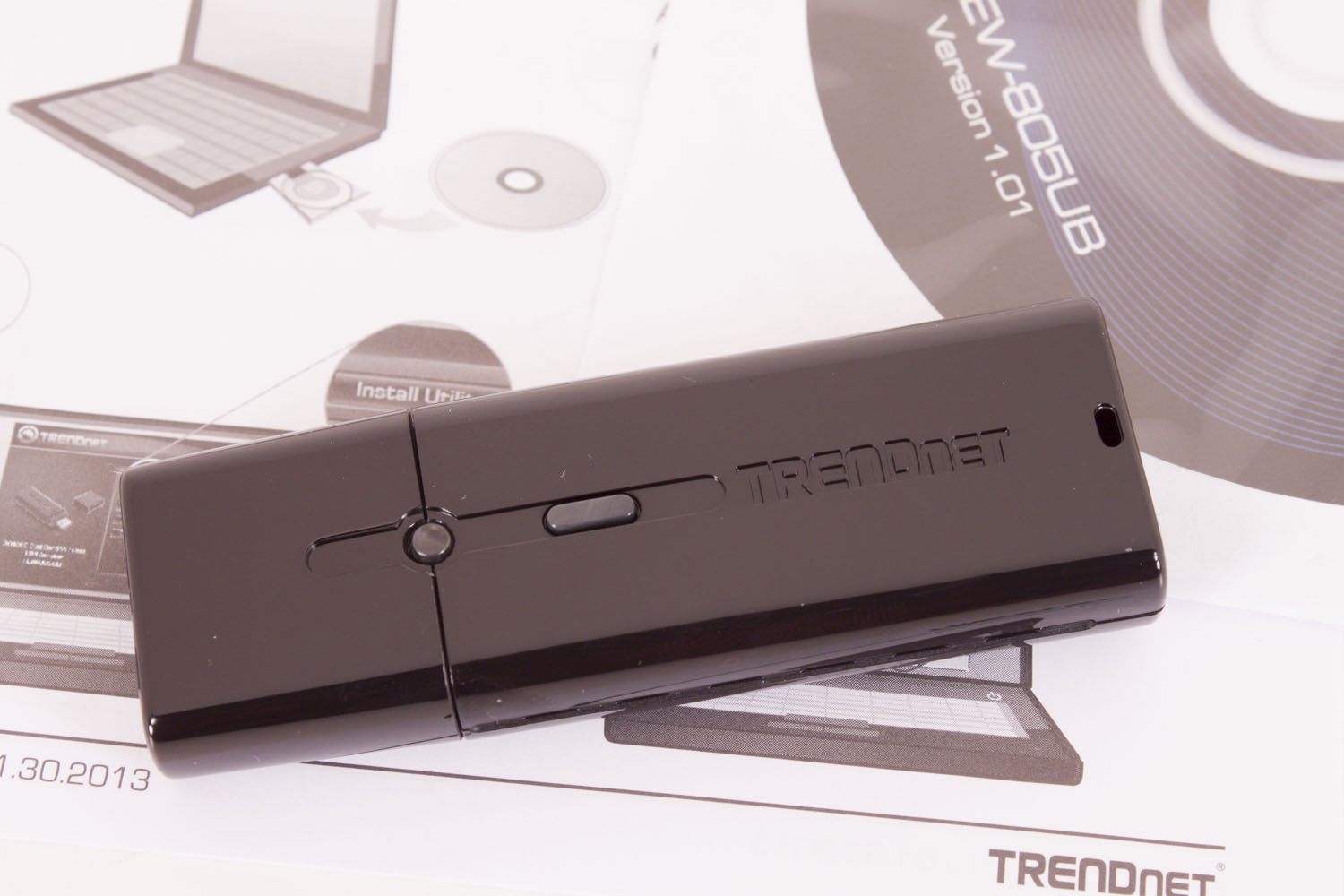Performance -
We have said it before and we will say it again; you cannot count performance by numbers alone. We will always give you both the raw numbers as well as the other items that make up for how well (or not so well) a product works. These are items like how quickly a USB adapter can initialize once it is plugged in. How quickly does it connect? We take a look at all of these for the TRENDNet TEW-805UB. For testing we used a NETGEAR R6300 802.11ac Dual Band (Concurrent) Wireless Router. We connected to these at 10-feet, 45-feet, and 50-feet. The 10 and 45 foot tests were inside the house proper and the 50 foot test was outside through the Cinder Block walls. We tested the adapter using both the 2.4GHz and 5GHz band. We compared this to other adapters on the market using the same R6300 router. The results were eye opening to say the least. As you can see the performance between the two AC1200 adapters is very close, but the USB 3.0 adapter does have a little bit of an edge. This is not terribly surprising, as USB 3.0 has significantly more bandwidth to push information through than USB 2.0 does.
As you can see the performance between the two AC1200 adapters is very close, but the USB 3.0 adapter does have a little bit of an edge. This is not terribly surprising, as USB 3.0 has significantly more bandwidth to push information through than USB 2.0 does.

Reception –
The reception on the TEW-805UB is about what you would expect from an external adapter. You have a pair of antenna inside that help you maintain the connection whether it is 2.4GHz or 5GHz. We found our sweet spot between 5 and 40 feet where we were getting around 90-100% signal strength. Outside that radius the signal strength seemed to fall off quickly with us hitting 50% at around 60 feet.
Link Speed –
As we mentioned 2.4GHz and 5GHz will have different maximum link speeds. The max link speed displayed for our 5GHz connection was 867Mbps which is the maximum speed that the TEW-805UB is designed to run at. For our 2.4GHz connection the link speed maxed out at 450Mbps again at the top of the scale. As we pushed out farther from the mark things did drop off with an average or 195Mps for 5GHz and 79Mbps for 2.4GHz.
File Transfer -
Although benchmarks are great they are not going to tell the full story. We also like to take a look at things you will really use a network adapter for. It is important to remember that there are several pieces to the file transfer puzzle. If you try to move data between two very slow HDDs then your network speed is not going to matter at all you will be hobbled by how fast the source and target can perform. To counter this we use a USB 3.0 attached RAID box with 2 120GB SATA 3.0 SSDs in RAID 0. This gives us an upper range limit of around 1200MBps to saturate our network pipe with.
Using our external array when within 10 feet we could hit close to 100MBps. At the outer edges of the range things did drop off. Still even outside the perimeter of the lab we were still consistently moving data at around 50MBps. However once we removed the array and went with the single ADATA SSD that we installed on the Series 7 Chronos the file transfer speed maxed out at 25MBps. This is still not a bad transfer rate for a single drive over wireless.

Streaming Video -
Streaming video over the TEW-805UB is excellent over Netflix, Hulu, Amazon Prime, or even from a local storage device we had no issues streaming HD video to our laptop. The video was crisp and clean with no stutters while audio was solid as well. The extra bandwidth that 802.11ac has makes it easy to pull down anything you want.




